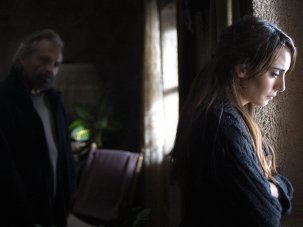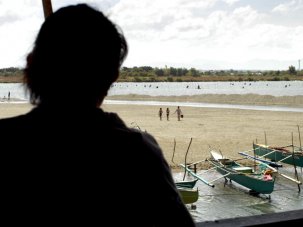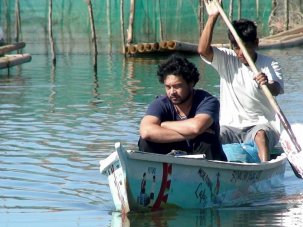Web exclusive
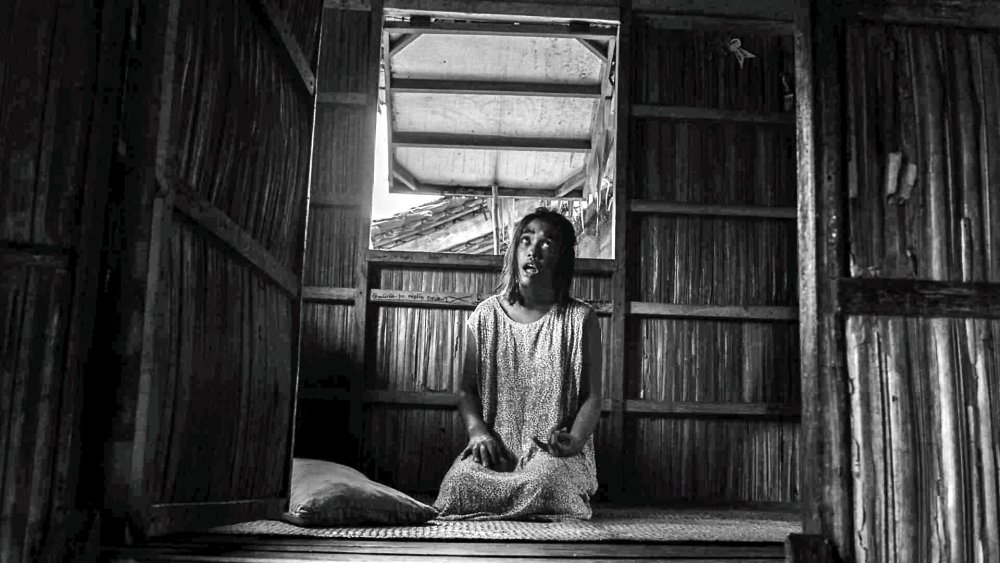
From What is Before (Mula Sa Kung Ano Ang Noon, 2014)
“A hard rain’s a-gonna fall,” sang Bob Dylan in 1963, describing a series of apocalyptic signs and wonders culminating in a black void strewn with forgotten souls.
Philippines 2014
unrated | 5h 38m
Director Lav Diaz
Cast
Perry Dizon
Roeder Camanag
Hazel Orencio
Karenina Haniel
Mailes Kanapi
Black and white
Subtitles
Original Philippine title Mula sa kung ano ang noon
Subscription VOD release date 23 April 2015 (on Mubi)
► Trailer
The torrential downpour that opens Lav Diaz’s bleak From What is Before is similarly pregnant with portent. Over a title reading “Philippines, 1970”, the sound of a deluge swamps the soundtrack while black-and-white images of damp, swaying foliage orient us firmly in both a rural setting – a small village not far from Manila – and also the familiar space-time continuum of Diaz’s cinema – a deceptively becalmed realm where everyday activities are made epic via the director’s usage of shots of an extended duration. The cuts in Diaz’s films are infrequent but never arbitrary, and in From What is Before, they’re charged with a very different kind of intensity. Instead of being impatient for each edit, we’re worried, because each cut brings the film’s characters closer to the nightmarish reckoning that’s laying for them. Because the times, they are a-changin’.
Predictably, for a film that runs nearly six hours in length – 90 minutes longer than 2013’s shot-in-colour and relatively accessible Dostoyevsky riff Norte, the End of History – From What is Before is difficult to synopsise definitively even as its trajectory is easily traced as a tragedy. It’s set in a community whose isolation from the rest of the country has resulted in a particularly tight-knit social fabric, which, as the film begins, is beginning to fray in places. These fissures are partly the result of mysterious external events, including the murder of local livestock by unknown parties, but it also seems to come from within: in the absence of material comforts, the characters cling to traditions, and when these fail them – as in the strange mental and physical deterioration of the mentally handicapped Josefina (Karenina Haniel) – they find themselves vexed by unprecedented anxiety and confusion.
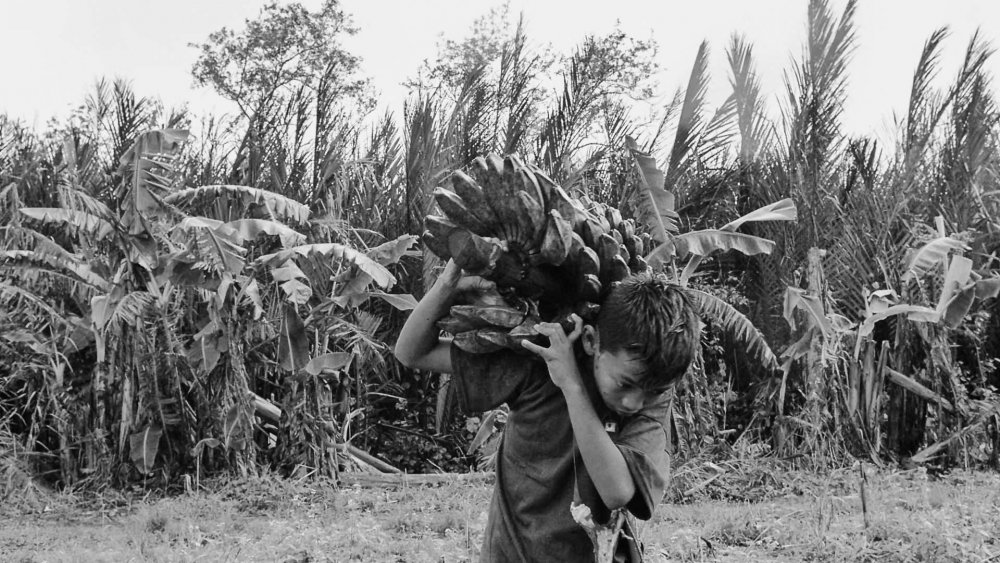
From What is Before (Mula Sa Kung Ano Ang Noon, 2014)
What Diaz is attempting here is a complicated mixture of nostalgia and distance: the black-and-white cinematography delineates an idea of past-ness even as the focus on simple, even banal interactions works against any sense of historical embellishment. The trick is that Diaz doesn’t idealise the modest, agrarian lifestyle on display so much as insist on its authenticity – this is how people lived in the Philippines, not so long ago.
What generates suspense – or more accurately, dread – is our knowledge that this place that seems to exist out of time is in fact located on a historical fault-line – the early days of the Marcos regime, whose incursions into individual privacy are embodied in the film first by the gossiping gadfly Heding (Mailes Kanapi) and them, much later, by the army soldiers who literally overrun the town, instilling a sense of top-down terror not unlike the villains of Abderrahmane Sissako’s Timbuktu – a potentially better point of comparison for From What is Before than Michael Haneke’s The White Ribbon, which has been invoked by many critics in their reviews.
Like The White Ribbon, From What is Before is a kind of primal-scene national parable, but where Haneke stages his fascist allegory as a kind of ideological whodunit (in which the guilty parties are, as usual, everybody who isn’t the filmmaker himself), Diaz doesn’t play games of implication. Instead, his characters are well aware of what’s going on – there are conversations about General Marcos’s impending ascension to power, and even the military men, when they arrive, are clear-eyed about the situation, which doesn’t mean that they’re willing or able to go against their orders to control the town at all costs. Just as Timbuktu reveals and demolishes the absurdity of authoritarian mantras by having its victims recognise them for what they really are, From What is Before bristles with a sense of resistance that, while doomed, is far from futile.
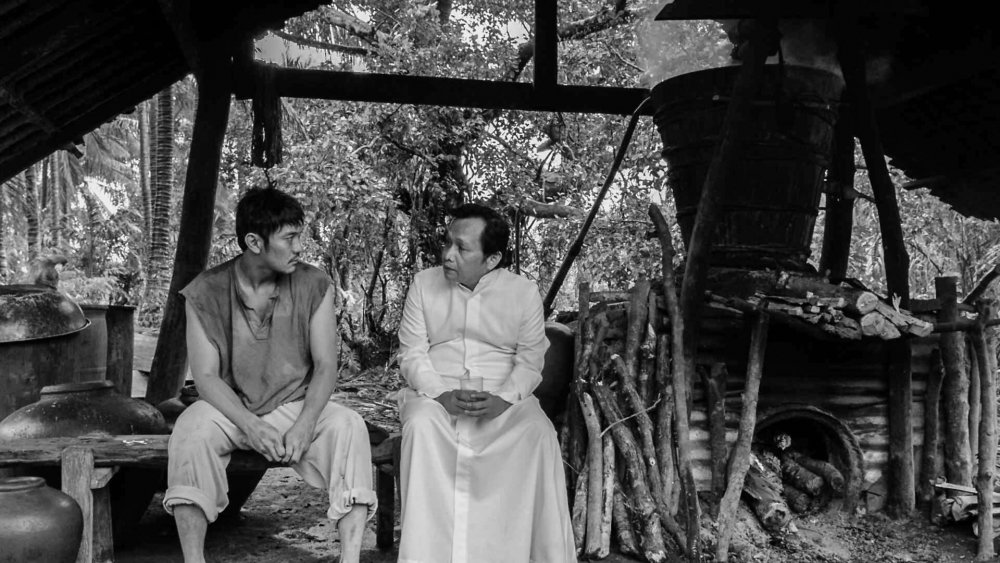
From What is Before (Mula Sa Kung Ano Ang Noon, 2014)
At this point, it almost goes without saying that Diaz’s images (he serves as his own cameraman and editor) are beautiful: he may be the premier landscape artist in contemporary world cinema. The placement of the camera is precise enough that certain set-ups slowly reveal hidden depths or planes of action, but for the most part, the shots are plain and unadorned, eschewing camera gymnastics for sustained, stationary observation. A few sequences stand out above the others for their tableaux-like power – a shot of waves pounding against a rock is positively mesmeric – and yet it never seems as if he’s straining for the art-cinema equivalent of a money shot. Instead, there is a democratic aspect to his aesthetic: because each shot is weighted with roughly equal importance (if not duration), the viewer becomes trained to perceive even the most seemingly banal details as an important part of the larger whole.
It’s de rigeur for even admiring critics to describe Diaz’s cinema as ‘challenging’, a more affirmative synonym for ‘difficult’, which, in a film culture that praises ease – not just in terms of escapist entertainment value but consumer access – unfortunately becomes the rhetorical equivalent of a heavy-duty padlock, affixed by cultural gatekeepers who believe so fervently in the idea of a small, self-selecting audience that they turn it into a self-fulfilling prophecy. It’s true that a six-hour movie is more demanding than a two-hour one, but the fact is that this dense, suggestive and finally devastating movie is less of an endurance test than many features that comprise a fraction of its running time.
It’s also available for streaming right now, on Mubi. It might seem heretical to recommend watching a film so carefully crafted at one’s leisure, in chunks. But it’s a far better option for curious viewers than simply sighing and consigning a major artist to a blind spot on account of there not being enough hours in the day.
-
The Digital Edition and Archive quick link
Log in here to your digital edition and archive subscription, take a look at the packages on offer and buy a subscription.




